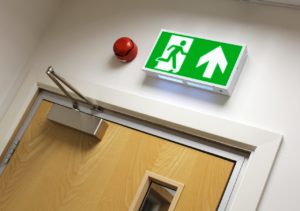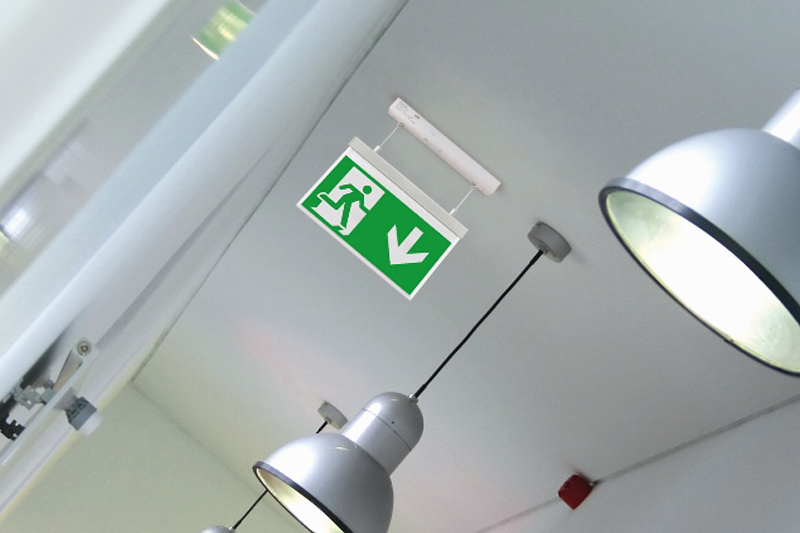Matt Parton, Product Development Manager with ESP, provides wholesalers with an overview of emergency lighting, its importance, the different types and the legislation governing this crucial product category.
Emergency lighting is an essential component of any building’s safety system. It plays a crucial role in guiding occupants to safety during power outages, fires, or other emergency situations. Whether in commercial buildings, industrial facilities or residential properties, emergency lighting provides illumination that can prevent panic, reduce accidents and facilitate safe evacuation.
Emergency lighting systems
There are several types of emergency lighting systems designed to suit different building requirements:
- Emergency escape lighting – illuminates exit paths, doorways and staircases during power failures.
- Standby lighting – provides temporary lighting for normal activities to continue during power outages.
- Open area (anti-panic) lighting – reduces panic by ensuring general visibility in large spaces, enabling safe movement towards escape routes.
- High-risk task area lighting – ensures safety in areas with dangerous equipment or processes.
Regulations and requirements
In the UK, emergency lighting is regulated under several key laws and standards to ensure safety in the event of a power failure. The main regulations and standards that apply include:
Regulatory Framework
- The Regulatory Reform (Fire Safety) Order 2005 (RRO)
- Requires businesses and building owners to conduct fire risk assessments, which include emergency lighting provisions.
- Ensures emergency lighting provides adequate illumination for safe evacuation.
- The Health and Safety (Safety Signs and Signals) Regulations 1996
- Requires emergency exit signs to be illuminated and visible at all times.
- The Building Regulations 2010 (Part B – Fire Safety)
- Sets out requirements for emergency lighting in new and modified buildings.
- Ensures routes and exits are sufficiently illuminated in case of failure.

British Standards for emergency lighting
- BS5266-1:2016 – Code of Practice for Emergency Lighting
- Provides guidance on design, installation, and maintenance.
- Covers minimum illuminance levels, locations, and durations.
- BS EN1838:2024 – Lighting Applications: Emergency Lighting
- Specifies the performance requirements for emergency escape lighting and standby lighting.
- BS7671:2018 (IET Wiring Regulations – 18th Edition)
- Covers electrical installation requirements, including emergency lighting circuits.
Maintenance and testing requirements
- BS5266-8 / BS EN50172:2004
- Requires routine inspections and testing, including:
- Monthly test – Functional test to check illumination.
- Annual full-duration test – Ensuring the lights stay on for the required period (e.g., one or three hours).
- Requires routine inspections and testing, including:
Solutions
There is a wide range of emergency lighting products that wholesalers can stock to meet the needs of customers working across different industries and building types. The essential products comprise:
- Bulkheads – versatile, cost effective lights suitable for multiple applications, including exterior use, as most are IP65 rated.
- Downlights – discreet, low-profile fittings that can be recessed into ceilings, ideal for areas where aesthetics are important.
- Exit signs – illuminated signs that combine directional escape signage with LED lighting, designed to operate for at least three hours during power failures.
- Twin spotlights – powerful LED lamps suitable for illuminating large open or high areas such as warehouses, sports stadiums, and industrial units.
- Self-test emergency lights: Programmed to perform automatic checks on batteries and lamps, providing visual indications of any faults.

The future
The future of emergency lighting holds significant advancements and innovations that will enhance safety, efficiency and sustainability. LED technology will continue to drive improvements in energy efficiency. Future emergency lighting solutions will optimise energy consumption without compromising illumination quality, contributing to more sustainable and eco-friendly lighting systems. The integration of Internet of Things (IoT) technology will enable real-time monitoring and diagnostics of emergency lighting systems. This will allow alerts to be received about potential issues before they become critical, ensuring that systems are always ready to perform when needed.
Find out more here
Find more industry feature articles here





